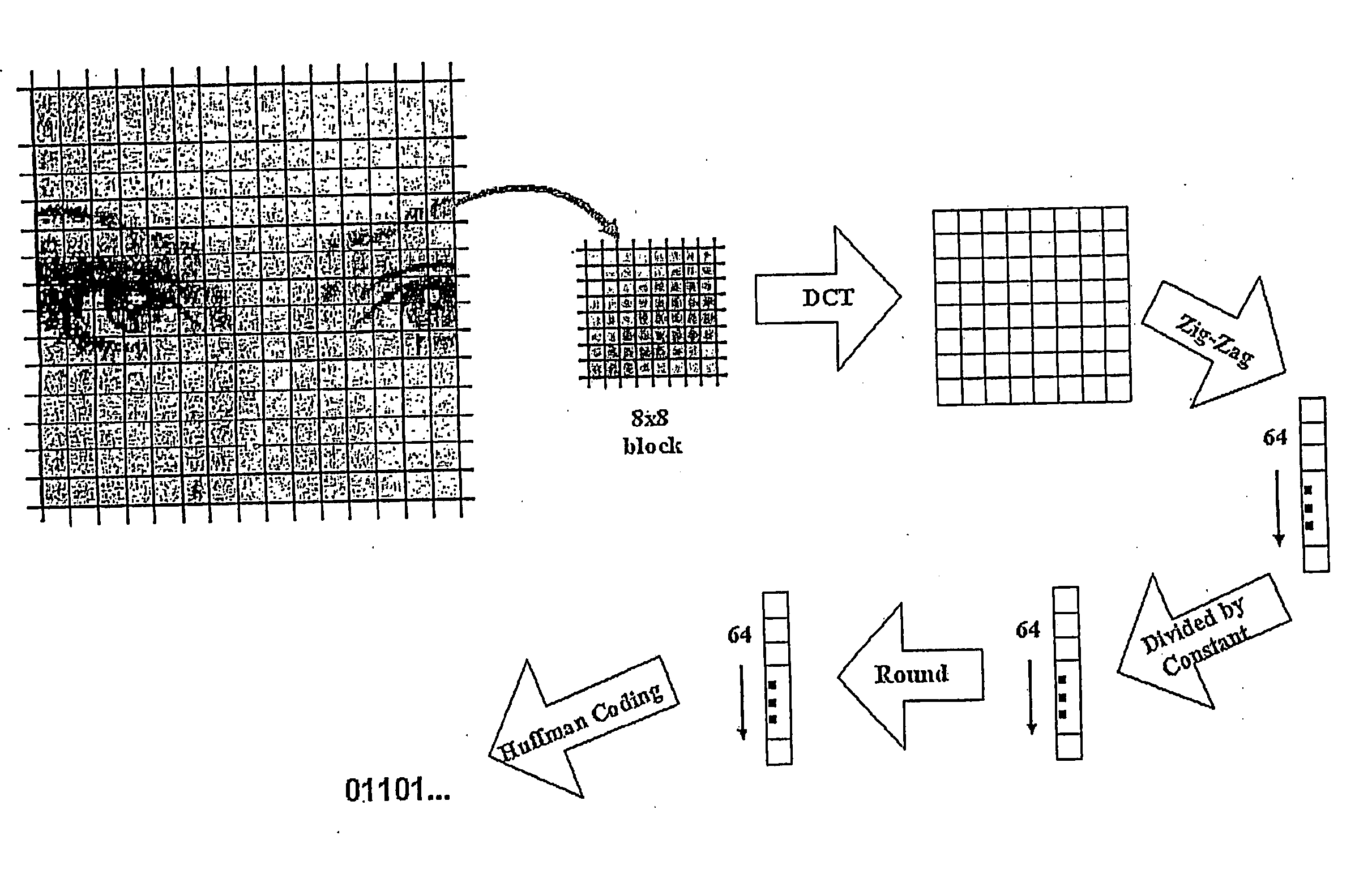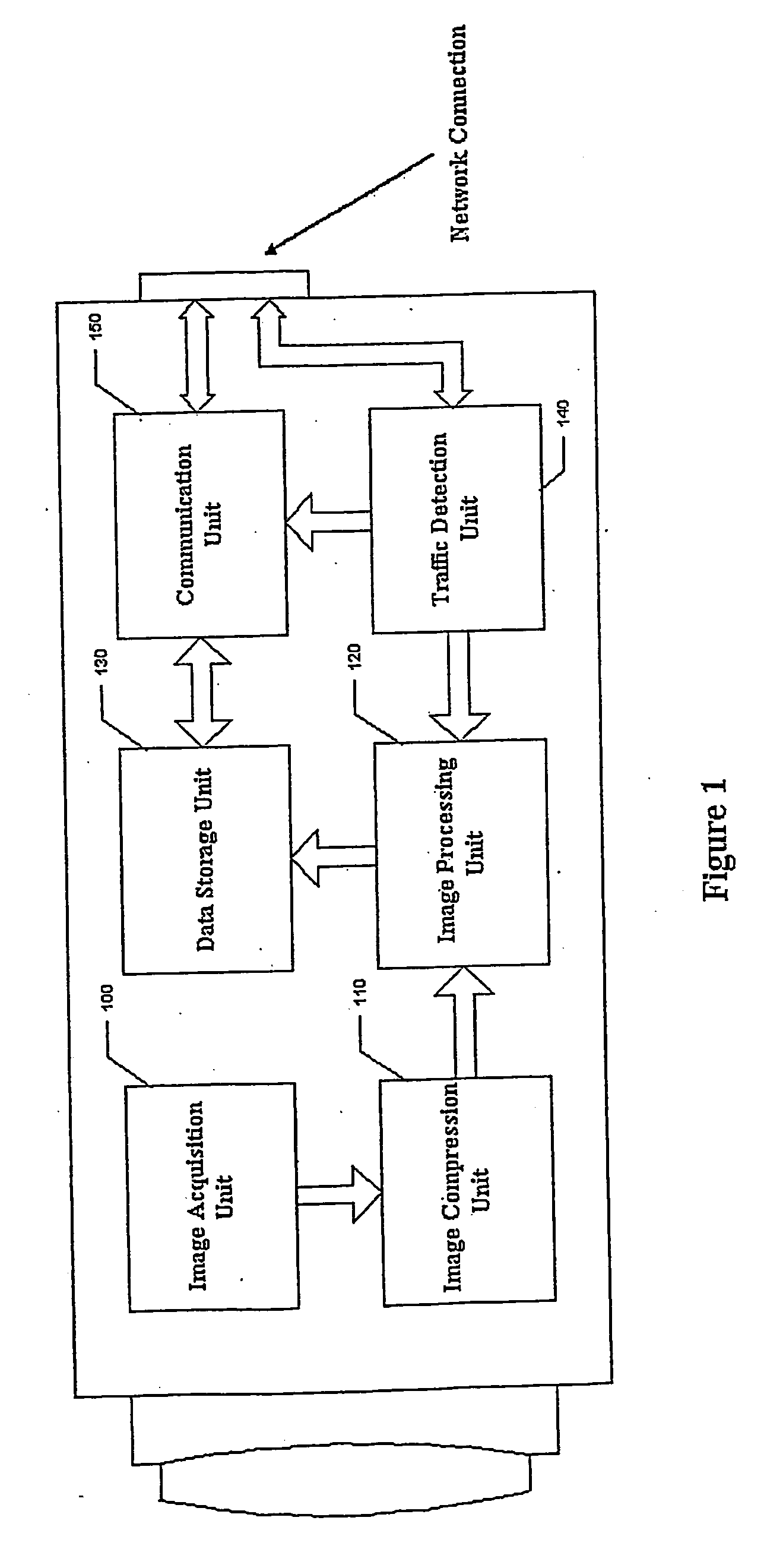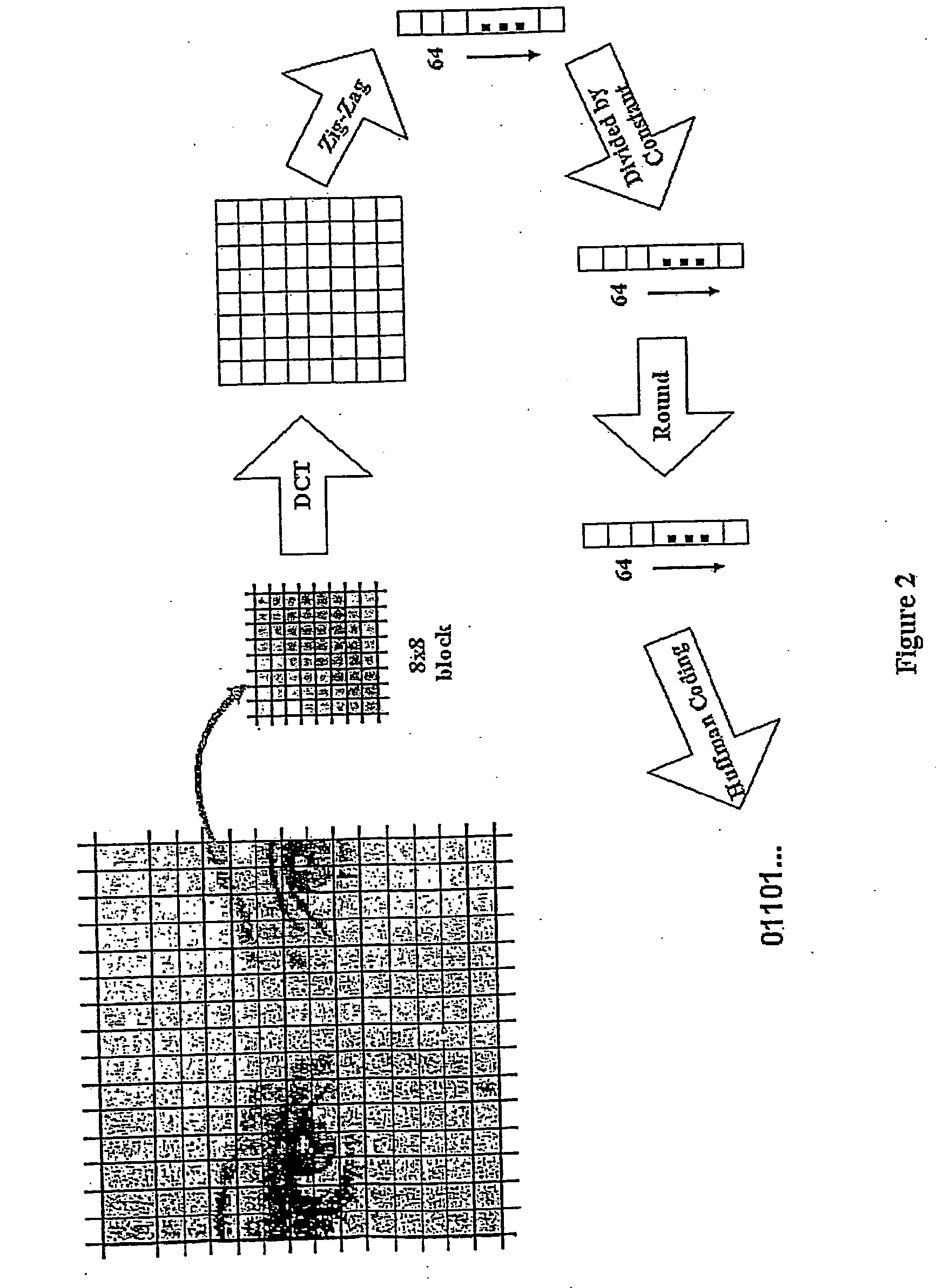Method and apparatus for processing image data
a technology for image data and processing methods, applied in image analysis, instruments, computing, etc., can solve the problems of requiring a substantial amount of storage space, unable to eliminate the need for vcr, and relatively complex and expensive components, so as to achieve a small image stream and reduce the size of compressed data
- Summary
- Abstract
- Description
- Claims
- Application Information
AI Technical Summary
Benefits of technology
Problems solved by technology
Method used
Image
Examples
Embodiment Construction
[0035]FIG. 1 is a block diagram of a network camera which embodies the present invention. The network camera includes an image acquisition unit 100, an image compression unit 110, an image processing unit 120, a data storage unit 130, a traffic detection unit 140, and a communication unit 150. The network camera in the disclosed embodiment can be a monochrome camera, color camera, or some other type of camera which will produce two-dimensional images—such as an infrared camera. The image requisition unit 100 of FIG. 1 consists of a CCD or CMOS image sensor device which converts optical signals into electrical signals, and a AID converter which digitizes the analog signal and converts it into a digital image format. The network camera can accept a wide range of bits per pixel, including the use of colour information. The image compression unit 110 of FIG. 1 can be a software program or a circuit—which is commonly found in network cameras on the market The operation of the image compr...
PUM
 Login to View More
Login to View More Abstract
Description
Claims
Application Information
 Login to View More
Login to View More - R&D
- Intellectual Property
- Life Sciences
- Materials
- Tech Scout
- Unparalleled Data Quality
- Higher Quality Content
- 60% Fewer Hallucinations
Browse by: Latest US Patents, China's latest patents, Technical Efficacy Thesaurus, Application Domain, Technology Topic, Popular Technical Reports.
© 2025 PatSnap. All rights reserved.Legal|Privacy policy|Modern Slavery Act Transparency Statement|Sitemap|About US| Contact US: help@patsnap.com



